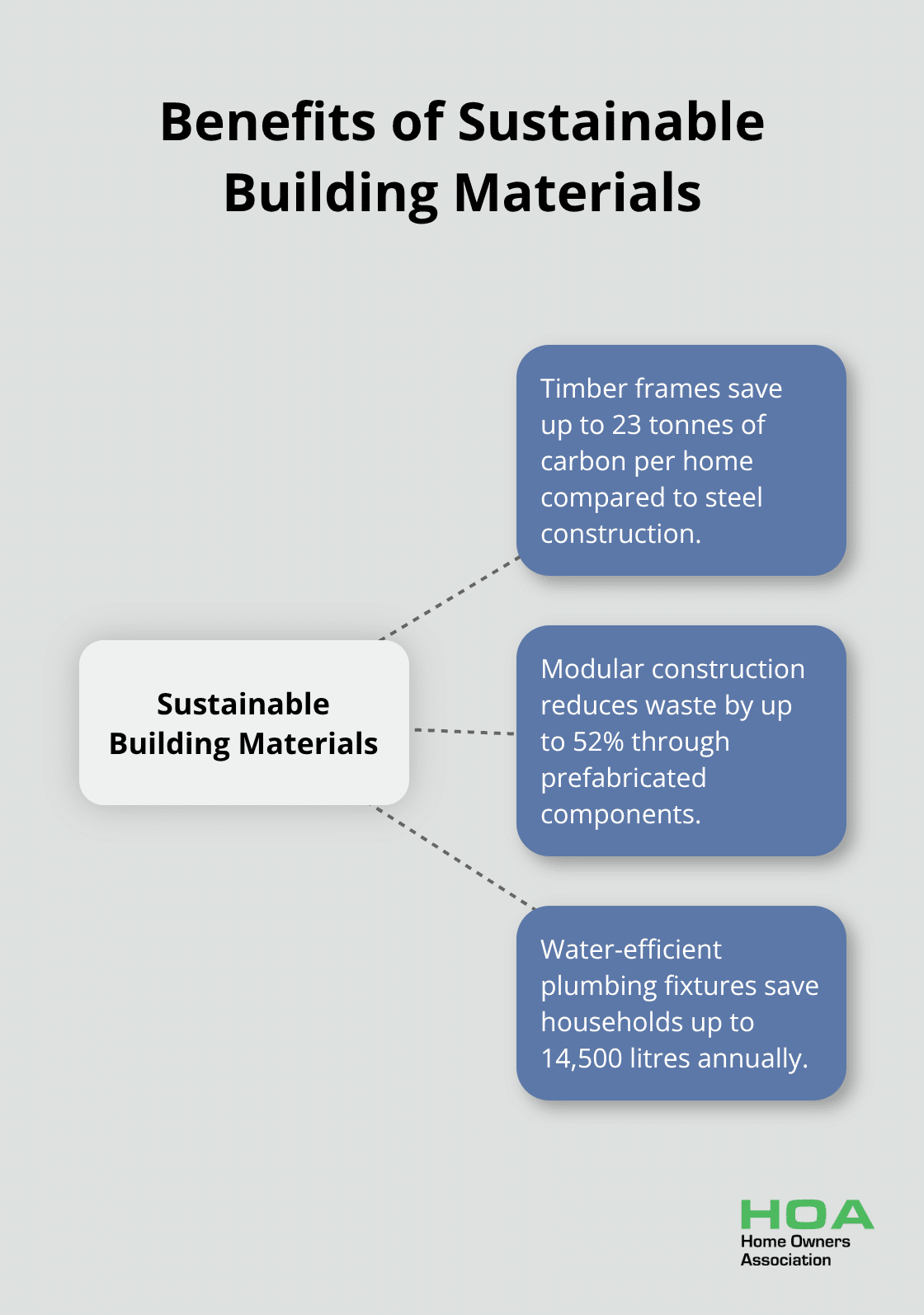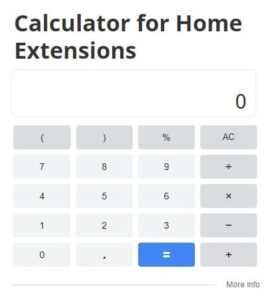
Australia’s extreme weather conditions demand smart building solutions that work year-round. Energy efficient home designs Australia has developed focus on passive cooling, solar integration, and climate-responsive materials.
We at Home Owners Association see homeowners saving 40-60% on energy bills through strategic design choices. The right innovations can transform your home into a comfortable, cost-effective sanctuary.

Australian Climate Considerations for Energy-Efficient Design
Australia’s eight climate zones require targeted approaches that most generic energy guides ignore. Zone 1 in Darwin demands completely different strategies than Zone 8 in Hobart. The Bureau of Meteorology data shows Darwin experiences 34°C average highs with 70% humidity, while Hobart averages just 17°C with 65% humidity. This massive variation means cookie-cutter solutions fail spectacularly.
Understanding Australia’s Diverse Climate Zones
Each climate zone presents unique challenges that builders must address. Zone 1 (tropical) requires maximum ventilation and minimal thermal mass. Zones 2-3 (hot humid summer) need controlled solar access with enhanced air movement. Zones 4-5 (temperate) benefit from balanced solar gain and thermal mass. Zones 6-8 (cool to cold) demand maximum winter sun capture and superior insulation performance.
The Australian Building Codes Board recognises these distinctions through mandatory climate-specific requirements. Insulation R-values vary from R1.5 in tropical zones to R6.0 in alpine areas (a 300% difference). Window performance standards also shift dramatically between zones.
Passive Solar Design Principles for Australian Conditions
North-facing windows capture winter sun perfectly across most Australian zones, but execution varies dramatically. In tropical Zone 1, limit north-facing glass to 15% of floor area to prevent overheating. Temperate zones like Sydney can handle 25-30% north-facing glazing. The key measurement is your home’s orientation – even 15 degrees off true north reduces solar gain by 20%.
Install eaves that block high summer sun but allow low winter rays. The magic number is eave depth equal to 45% of window height for optimal year-round performance. Thermal mass placement matters too – position concrete or brick walls to receive direct winter sun but shade them in summer.
Natural Ventilation Strategies for Hot Climates
Cross-ventilation requires specific window placement that most builders get wrong. Position inlet windows on the cool side and outlet windows 1.5 metres higher on the warm side to create effective thermal stack ventilation. To address high electricity consumption from heating and cooling, focus first on the building envelope, the barrier between conditioned and unconditioned space.
Ceiling fans positioned 2.5 metres from walls increase air movement efficiency by 25%. Stack ventilation through clerestory windows works best in zones 2-5, while zones 6-8 need mechanical backup during extreme weather periods.
These climate-responsive strategies form the foundation for selecting the right sustainable building materials and technologies that will maximise your home’s performance.
Innovative Building Materials and Technologies
Earthwool insulation is an economical choice with improved acoustic and energy saving properties, creating a peaceful environment in your home. This Australian-made product outperforms traditional batts in moisture resistance and fire safety. Polyester insulation performs better in humid zones 1-3, as it maintains R-values even when wet.
Thermakraft permeable wraps protect against moisture damage that destroys 23% of Australian homes within 15 years. These wraps allow vapour transmission while they block wind and rain effectively.
Sustainable Insulation Options for Australian Homes
Timber frames save up to 23 tonnes of carbon per home compared to steel construction (timber sequesters carbon dioxide naturally). Weathertex timber cladding uses PEFC certified hardwoods and comes with a 25-year warranty against decay. Low VOC paints from brands like Haymes create healthier indoor air while they reduce environmental impact.
Modular construction reduces waste by up to 52% through prefabricated components. Water-efficient plumbing fixtures save households up to 14,500 litres annually. These sustainable building materials work together to create homes that perform better and last longer.

Smart Glass and Window Technologies
Electrochromic glass windows automatically tint when temperatures exceed 25°C, which reduces cooling loads by 30% in zones 2-5. Double-glazed units prevent 49% of heat loss, making them standard in zones 6-8. Low-E coatings reflect infrared radiation while they allow visible light through.
Triple-glazed units work in alpine zones but create condensation problems in humid climates. Window-to-wall ratios above 25% require performance glazing to maintain comfort. Install argon-filled units for maximum thermal performance in extreme climates.
Solar Panel Integration and Battery Storage Systems
Standard 1.98 kW solar systems generate insufficient power for modern homes. The best solar system size is 6kW for return on investment. Tesla Powerwall 2 batteries store excess solar power during 3-6 PM peak generation hours.
Enphase microinverters increase system efficiency by 15% compared to string inverters. Mount panels at 30-degree tilt facing north for optimal performance across zones 4-7. Battery storage pays for itself within 7-9 years through peak tariff avoidance. Solar hot water systems save additional $400-600 annually on gas bills.
These innovative building materials and technologies require strategic implementation to maximise their cost-effectiveness and performance benefits.
Cost-Effective Implementation Strategies
Federal and state rebates slash upgrade costs by 50-80% when you access the right programs. The Small-scale Renewable Energy Scheme allows the creation of small-scale technology certificates (STCs) with a value that can be redeemed by selling or assigning them. Victorian Energy Upgrades program offers rebates up to $1,000 for heat pump hot water systems and $200 for ceiling insulation.
NSW Energy Savings Scheme delivers certificates worth $500-1,500 for ducted reverse cycle air conditioning upgrades. South Australia’s Retailer Energy Efficiency Scheme covers 50% of LED conversion costs.
Government Rebates and Incentives Available
Queensland’s Solar for Rentals trial provides $3,500 rebates for landlords who install solar systems on rental properties. Western Australia’s Household Battery Scheme offers loans up to $24,000 at 3.7% interest for battery storage systems. Tasmania’s Energy Saver Loan Scheme provides interest-free loans up to $10,000 for energy efficiency upgrades.
ACT government rebates cover up to $5,000 for reverse cycle air conditioning in low-income households. Northern Territory’s Home Energy Efficiency Scheme provides free energy audits plus rebates for recommended upgrades.

Prioritising High-Impact Energy Upgrades
Ceiling insulation delivers significant energy savings based on residential energy savings measures data. Wall insulation follows at $5 return per dollar in zones 6-8. Solar hot water systems pay back within 4-6 years while they reduce gas bills by $400-600 annually.
Heat pump hot water units cost $3,000-5,000 but save $800 yearly compared to electric resistance systems. Window upgrades show poor ROI unless you replace single-glazed units in zones 6-8. Draught sealing costs under $500 but reduces heating bills by 15-25% immediately.
Working with Certified Energy-Efficient Builders
HIA GreenSmart certified builders complete mandatory energy efficiency training that standard builders lack. Passivhaus certified designers create homes that use 90% less heating energy than standard construction. Master Builders Association sustainability accreditation identifies contractors experienced with energy-efficient techniques.
Green Building Council of Australia professionals understand whole-house performance optimisation. Request three recent projects with verified energy ratings above 7 stars. Energy-efficient home builders who cannot provide documented energy performance results from previous builds indicate inexperience with high-performance construction.
Final Thoughts
Energy efficient home designs Australia delivers measurable returns that compound over decades. Homeowners who invest $30,000-50,000 in comprehensive energy upgrades typically recover costs within 8-12 years through reduced utility bills. After payback, these homes generate $2,000-4,000 annual savings that continue for the home’s lifetime.
The environmental benefits extend beyond individual savings. Energy-efficient homes reduce Australia’s residential carbon emissions by 3-5 tonnes annually per household. With 10.7 million households nationwide, widespread adoption could cut national emissions by 32-54 million tonnes yearly (equivalent to removing 11 million cars from roads).
We at Home Owners Association provide Melbourne homeowners with trade pricing on energy-efficient materials and expert guidance throughout their construction journey. Our members access substantial savings on construction materials while they receive personalised advice to achieve optimal energy performance. We help homeowners make informed decisions that create comfortable, cost-effective homes.





